- Home
- Alison Weir
Queen Isabella: Treachery, Adultery, and Murder in Medieval England Page 21
Queen Isabella: Treachery, Adultery, and Murder in Medieval England Read online
Page 21
The disgraced Earl was taken in manacles to his own castle at Pontefract, and there, on 20 March, in the great hall, tried as a rebel under martial law before the King and several magnates, including the Elder Despenser. He was not permitted to speak in his own defense, since, ten years before, he had not permitted Gaveston to do so.67 The lords found him guilty of treason,68 and he was sentenced to be hanged, drawn, and quartered as a traitor, but in consideration of his royal blood, the King commuted the sentence to beheading. The Brut claims that this was at the intercession of the Queen, but Isabella was in London at this time, lodged in the Tower, and it would have been impossible for her to have received news of Lancaster’s capture and then got a message back to the King in three days. It took four days for a fast messenger to ride from London to York.
Few had anticipated that Edward would go so far as to put Lancaster to death; not only was the Earl his kinsman, but no English nobleman been executed for treason since the time of William the Conqueror. But as far as the King was concerned, death was the only fitting penalty for the man who had ordered Gaveston’s murder, a death that would in many respects mirror Gaveston’s own.69
“Violent deeds bring their own punishment,” observed one of Lancaster’s critics. On 22 March, in the midst of a snowstorm, the once proud Earl, now wearing the somber robes of a penitent and a tattered old hat, was led trembling out of the castle on a “worthless mule” to Saint Thomas’s Hill, a mound about a mile off, and forced to pass through a jeering mob, which flung stones, offal, and handfuls of snow at him. At the place of execution, he was made to kneel facing in the direction of Scotland, whence he had so treacherously appealed for aid. After his head had been roughly hacked off “with two or three strokes,” it was shown to the King, then buried with his body in Saint John’s Priory at Pontefract.70
With Lancaster dead, Edward was now free to rule without opposition. He exacted a bloody and unprecedented vengeance on those who had supported Lancaster and, in so doing, made a clean sweep of all his enemies. On 22 March, twenty-four of the Earl’s followers were executed in various places; the next day, a further six were drawn and hanged at York. Others were hunted down and slaughtered. The bodies were quartered, and the quarters exhibited in public places all over the land for the next two years.71 On 14 April, Badlesmere, who had been discovered hiding in the house of his nephew, Bishop Burghersh, at Stow Park, was hanged and beheaded at Canterbury.72 The King’s wrath extended even to Lancaster’s estranged wife, Alice de Lacy, and her elderly mother, the Dowager Countess of Lincoln, both of whom he committed to jail.73 In all, 118 persons, many of them barons and knights, suffered execution, rigorous imprisonment, or exile, and many more faced crippling fines.
Nor did Henry Burghersh, Bishop of Lincoln, escape the King’s vengeance. Edward felt Burghersh had betrayed his trust and favor by harboring Badlesmere and seized his temporalities—the financial and material mainstays of his episcopal office. He also wrote several letters exhorting the Pope to depose him from his see. But the Pope refused, protesting that it was unreasonable to ask him to visit unproven offenses with severe penalties.74
The chroniclers, like most of the King’s subjects, were horrified. “Oh calamity!” cried the author of the Vita Edwardi Secundi. “To see men, so recently clothed in purple and fine linen, now tied in rags, bound and imprisoned in chains. The harshness of the King has increased so much that no one, however great or wise, dares to cross his will. The nobles of the realm are terrified by threats and penalties. The King’s will has free play. Thus today might conquers reason, for whatever pleases the King, though lacking in reason, has the force of law.” The Pope begged the King to desist from his tyrannical course, but he refused to listen. Of those apprehended, only fifteen men escaped punishment. Andrew Harclay’s loyalty was well rewarded: on 25 March, the King created him Earl of Carlisle.75
After Lancaster’s execution, Edward stayed at Pontefract, having summoned Isabella to join him there.76 She had been kept well informed about the judicial bloodbath that was taking place, and when she arrived, she did her best to mitigate the King’s savagery. One rebel for whom she successfully interceded was Bewes, Lord Knovill, whose wife, Joan, had petitioned the Queen for her help: he was allowed to save his life and his lands on payment of a huge fine and later received a pardon.77 But Edward was rarely as willing to be merciful, while Despenser certainly resented Isabella’s intervention, and “when he saw the displeasure of the Queen,” he deliberately continued to encourage the King in his bloody reprisals.78
In May, Isabella and Edward arrived at York, where the Parliament that would finally repeal the Ordinances as prejudicial to the Crown met on the second.79 That the Queen had proved loyal and supportive throughout the rebellion and its aftermath, despite her undoubted antipathy toward the Despensers, is evident from her letters to Harclay and Ward, and another that she wrote to Pope John around April, vigorously condemning Lancaster’s actions.80 Yet she was shocked by the Earl’s execution; he was, after all, her uncle and of royal blood. Even though she herself had urged Edward to rise against him, she blamed Despenser for his death,81 for which he “earned the deep hatred of the whole country, and especially of the Queen.”82 “Small wonder if [the Queen] does not like Hugh, through whom her uncle perished,” observed the author of the Vita Edwardi Secundi. Not only did Isabella blame Despenser for the ignominious butchering of her kinsman, but she must also have considered him responsible for a deed that had undermined the very fabric of monarchy and set a dangerous precedent.
Now Parliament had without a quibble finally repealed the Ordinances that Lancaster had forced on Edward, and whatever her feelings about Lancaster’s execution, Isabella must have rejoiced to see her husband restored to his proper authority.
Yet there was a price for this, to be exacted not only from Edward’s subjects but also in time from Isabella herself. That price would be the breakdown of her marriage and all its tumultuous consequences, which were directly attributable to the Despensers’ influence over the King. “From that time on,” says Higden, “the power of the Despensers began to increase, and the power of the Queen decreased.”
The creation of the Elder Despenser as Earl of Winchester on 10 May signals the beginning of the tyranny of the favorites; henceforth, they ruled the King with scant regard for law or justice and were firmly in control of both state affairs and royal patronage—or out of control, as many feared. The King’s recent purges had left all their chief opponents either dead or in prison, and of the remaining magnates, not one was strong enough to oppose them or curb their power. Even Pembroke was unable to keep them in check: not only was he ailing, but Edward was aggrieved with him for urging the Despensers’ exile and had made him pledge his body, land, and goods to obey the King and not ally with anyone against him;83 consequently, Pembroke was slavishly lending his support to the new regime.
From now on, “King Edward II truly governed his country with great cruelty and injustice, by the advice of Sir Hugh le Despenser.”84 He might have ennobled the father, but it was the son who came to dominate the King. Edward began by showering the younger Hugh with many large grants and most of the confiscated lands and honors of the contrariants, including those of d’Amory and Audley, which effectively made him the unopposed ruler of South Wales.85 Thereafter, the Younger Despenser was to appropriate everything he could lay his hands on, exploiting the King’s generosity, intimidating people into selling him property at vastly reduced prices, and extorting cash from his victims by violence, bullying tactics, outright fraud, and cunning manipulation of the machinery of law. By such unscrupulous methods, he built up a vast landed estate and a huge fortune that rivaled even that of the late Earl of Lancaster.86 This was all done with the full cooperation and the blessing of the King, and it would not be too much of an exaggeration to say that, between them, Edward and Despenser subjected the country to a reign of terror. As Hugh grew ever more rapacious and oppressive, his arrogance became more and more in
sufferable. He was far cleverer, and much more vicious, than Piers Gaveston.
Despenser’s ruthless brutality extended even to women. It was probably he who had prompted Edward’s harshness toward Mortimer’s wife, mother, and daughters. He himself had imprisoned the wife and children of the Welsh rebel Llywelyn Bren, and in 1326, he was accused of having committed extortion and violent crimes against the widows and children of executed Lancastrians.87 He intimidated his sister-in-law, Elizabeth de Clare, d’Amory’s widow, into giving him Usk in return for the lesser lordship of Gower and then persuaded Edward to confiscate Gower, thus effectively dispossessing Elizabeth of her rightful inheritance. Later on, Despenser harassed Pembroke’s widow, the friend of the Queen, in a similar manner, extorting from her £20,000 as well as lands and livestock, and forcing her to sell him the latter at a grossly debased price. He kidnapped a wealthy heiress, Elizabeth Comyn, and held her hostage for a year until she signed over £10,000 and two valuable estates to him. Eager to get his hands on more knights’ fees, castles, and manors, Despenser persecuted Lancaster’s widow, Alice de Lacy, accusing her of being the chief cause of her husband’s execution and threatening to have her burned alive, which was the penalty for murdering a husband. In terror, she handed over her lands and also paid a massive fine, of £20,000.88 Then there was Elizabeth Talbot, a widow who was forced by Despenser to surrender her manor of Painswick, Gloucestershire, and other lands to him. He even had another widow, Lady Baret, tortured so that her four limbs were broken and her other injuries were so horrific that she went insane.89 It seemed that Despenser took a perverted pleasure in seeing his victims crushed. Isabella may well have been behind the accusations against the Despensers made in 1326, which suggests that she was revolted by his cruelty to innocent women and children.
The Despensers made many enemies. Of the Younger Hugh, it was said, “The whole land has turned to hatred of him, and few would mourn his downfall.”90 People grumbled that one king was bad enough, but three were intolerable. The fateful result of the Despensers’ tyrannical ascendancy was a gradual erosion of sympathy for the King, who did little to check their excesses, and whose wishes no one now dared withstand.91
There is no denying, however, that the Despensers were both able and efficient administrators. They solved the King’s financial problems by introducing innovative fiscal reforms and made him very rich—it was soon said that, although many of his forefathers had amassed money, “he alone exceeded them all.”92 In collaboration with their staunch allies and clients Robert Baldock, who was Keeper of the Privy Seal from 1320 and Chancellor from August 1323, and Walter Stapledon, Bishop of Exeter, who was Treasurer, they brought about significant reforms in the Chancery and the Wardrobe, and reorganized the Exchequer records. The Despensers also boosted the wool trade by instituting a series of staples, or markets, in England, so that merchants did not have to go abroad to buy wool for export. However, their motive behind this was not concern for the prosperity of the realm but to raise the King’s revenues.93
There can be little doubt that the Despensers resented the Queen’s influence over Edward; they knew she had been instrumental in securing their exile and the release of William Somerton. The Younger Hugh may have been jealous of her in a sexual sense, but the overriding perception of both father and son was surely that Isabella was the one remaining threat to their political dominance and must be neutralized. We have seen that relations between the Queen and the favorites had been strained since 1320, when the Elder Hugh had failed to pay her her dues, and they must now have all but broken down when, in July 1322, the Younger Despenser suddenly ceased paying her the £200 he owed her annually out of the farm of Bristol. From now on, neither would pay Isabella the rents due to her nor enter into any recognizance for the payment of arrears.94 They also ensured that her castles at Marlborough and Devizes were not returned to her. To a queen who was jealous of her financial privileges, this was a most potent slight, leaving her in no doubt as to where she stood with the favorites. Furthermore, it was clear that she stood alone, for there was no one left to act as her champion, and it had become starkly manifest how ruthless the Despensers could be and how far the King had fallen in thrall to them. Yet Isabella was not one to be easily intimidated. She dissembled, put on a smiling face toward the favorites, and quietly set about undermining them.
Despenser had a blood feud to settle—he had vowed to despoil Mortimer and “revenge the death of his grandfather upon him,”95 and encouraged by him, Edward now dealt with the Mortimers. The Welsh, who had resented their harsh rule, had petitioned him to show no grace to either man.96 On 13 June, the King issued a commission for the trial of the Mortimers and ordered the seizure of their followers’ lands. On 13 July, he commanded a review of Mortimer’s rule in Ireland, anticipating that some treachery or financial irregularities might be uncovered. The next day, justices were appointed to pass sentence on both uncle and nephew. The Mortimers were tried “for notorious treasons” on 21 July in Westminster Hall and sentenced to forfeiture and death;97 the next day, for reasons that are unknown, and to many people’s astonishment, this sentence was commuted to perpetual imprisonment in the Tower.98
It has been argued that the passing of the death sentence on the Mortimers was merely a formality, since the King had intended all along to show mercy because they had surrendered to him without further resistance. Pembroke had told them as much back in January, but Pembroke was now out of favor and it is unlikely that Edward would have heeded any request from him to honor the undertakings that he had given then. Nor is it likely that the vengeful Despensers would have approved of or permitted such clemency. There has been more plausible speculation that some highly influential person interceded on the Mortimers’ behalf, possibly the Queen. Less plausibly, it has been suggested that she pleaded for Mortimer’s life because she was in love with him, but there is no evidence for this. Nor is there any evidence that Lady Mortimer’s French relatives intervened for him.99
If Isabella did intercede, she was probably acting on behalf of Lady Mortimer, to whose plight she is known to have been sympathetic; she may also have felt some latent sympathy for the Mortimers themselves, who had after all lost everything in making a stand against the very family that was now threatening her own position. Of course, it must have given her great satisfaction to pit her influence against that of the favorites, whose power at this time may not have extended beyond the door of the royal nuptial chamber; after all, Edward had heeded Isabella’s pleas in the Somerton case and was probably mindful of the support she had given him during the recent rebellions. Nevertheless, it would have been obvious that Isabella was once again deliberately acting in opposition to the Despensers on behalf of their enemies and in so doing demonstrating that she was an opponent to be reckoned with.
The Mortimers’ lives had been spared, but they faced spending the rest of their days in what was probably the Lanthorn Tower, in a lofty, narrow cell in conditions that were “less elegant than were seemly,” with barely enough to eat—their keepers were allocated only 3d. (not quite 2p.) a day for their maintenance;100 as nobly born prisoners, they could have expected to have been relatively comfortably housed, with certain privileges, but there were limits to the King’s clemency, and the Despensers had to be placated.
Back in May, knowing that his truce with the Scots was about to expire, the King had announced his intention of mounting a new campaign against Bruce and had ordered a muster at Newcastle for 22 July. In June, once the truce ended, Bruce again began raiding the North. When Edward finally did march into Scotland in August, with his bastard son Adam among his company,101 it was to find that the land had been laid waste. The only sustenance that his men could find was an aged cow in Lothian, which Surrey described as “the dearest beef I ever saw.” On 6 September, Edward optimistically reported that there was no resistance, and on the eighteenth, he was still hopeful of success,102 but by the beginning of October, his army was demoralized, starving, and racked wi
th dysentery—his son Adam, who died during this campaign,103 was probably one of those who succumbed to it—and the King had no choice but to retreat south toward Yorkshire, where he hoped to raise more troops.104
Intent on surprising and capturing Edward, Bruce now crossed the Solway Firth and swept down to Northallerton in Yorkshire, which he reached on 12 October. During the campaign, Isabella had stayed in Northumberland;105 Edward had sent her to the fortified priory at Tynemouth,106 which proved to be an unwise decision in light of what was shortly to happen. On 13 September, he addressed a letter there to his niece, Eleanor de Clare,107 the Queen’s principal lady-in-waiting, who was in attendance on her at that time. When the King reached York, he sent Isabella twenty pieces of sturgeon, which was evidently a favorite dish of hers, and thirteen to Eleanor.108
On 14 October, Isabella was still at Tynemouth, while the King and the Despensers were staying only fourteen miles east of Northallerton, at the Cistercian monastery at Rievaulx. Here, they received an urgent warning that the Scots were fast approaching. Just in time, Edward, “being ever chicken-hearted and luckless in war,”109 fled to Bridlington and thence to York, abandoning his treasure, his state papers, and his baggage. He was well aware that his flight would leave his wife isolated at Tynemouth and vulnerable to attack or capture by Bruce’s army, which now commandeered most of the North, but he found time to write a hurried letter to Thomas de Grey, the constable of nearby Norham Castle, warning him to be vigilant and placing the Queen under his protection; should the Scots approach, the constable was to enlist the support of all the castellans on the eastern March of the border and take steps to safeguard her. Edward also sent orders to the Earls of Richmond and Atholl, and the seneschal of his household, commanding them to raise a troop of men from Despenser’s forces and fortify Tynemouth Priory. Then he wrote to Isabella, telling her that he was sending Richmond and Atholl to rescue her, but without referring to Despenser. Nevertheless, it seems that she did find out about the plan to send Despenser’s men, for in a second letter to her, Edward wrote that he had ordered a French knight, Henry de Sully, to go to her defense at Tynemouth, since he understood that Sully “would be more agreeable than others to her.”110 This is almost certainly an oblique reference to Despenser, whose name Edward seems to have been reluctant to mention to his wife. Evidently, her hatred and fear of Hugh were such that she would rather have faced the Scots than entrust her safety to him.

 Richard III and the Princes in the Tower
Richard III and the Princes in the Tower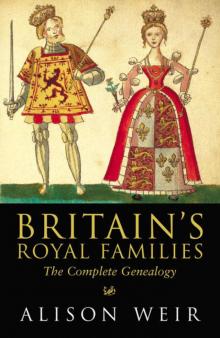 Britain's Royal Families: The Complete Genealogy
Britain's Royal Families: The Complete Genealogy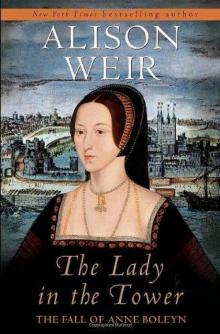 The Lady in the Tower: The Fall of Anne Boleyn
The Lady in the Tower: The Fall of Anne Boleyn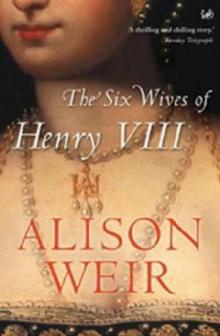 Six Wives of Henry VIII
Six Wives of Henry VIII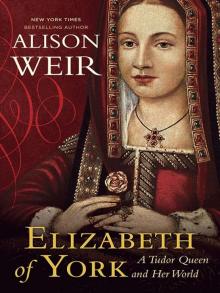 Elizabeth of York: A Tudor Queen and Her World
Elizabeth of York: A Tudor Queen and Her World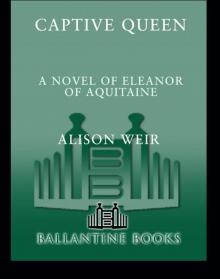 Captive Queen
Captive Queen Innocent Traitor
Innocent Traitor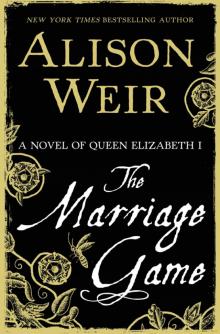 The Marriage Game
The Marriage Game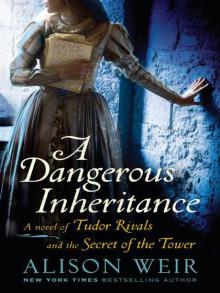 A Dangerous Inheritance
A Dangerous Inheritance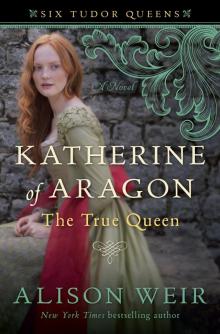 Katherine of Aragón: The True Queen
Katherine of Aragón: The True Queen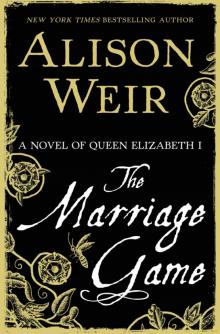 The Marriage Game: A Novel of Queen Elizabeth I
The Marriage Game: A Novel of Queen Elizabeth I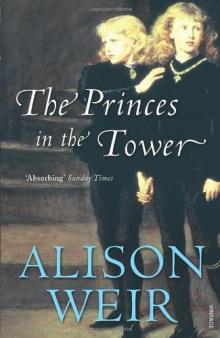 Princes in the Tower
Princes in the Tower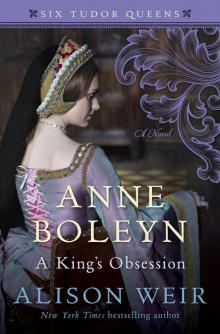 Anne Boleyn: A King's Obsession
Anne Boleyn: A King's Obsession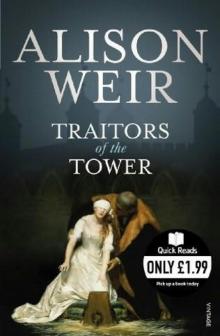 Traitors of the Tower
Traitors of the Tower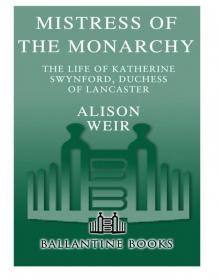 Mistress of the Monarchy: The Life of Katherine Swynford, Duchess of Lancaster
Mistress of the Monarchy: The Life of Katherine Swynford, Duchess of Lancaster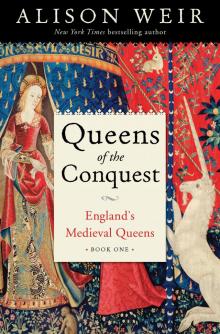 Queens of the Conquest: England’s Medieval Queens
Queens of the Conquest: England’s Medieval Queens Eleanor of Aquitaine: A Life
Eleanor of Aquitaine: A Life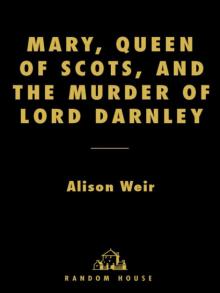 Mary, Queen of Scots, and the Murder of Lord Darnley
Mary, Queen of Scots, and the Murder of Lord Darnley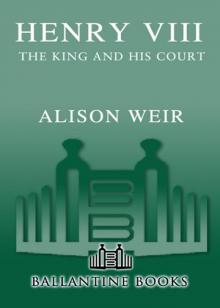 Henry VIII: The King and His Court
Henry VIII: The King and His Court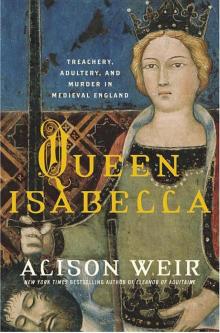 Queen Isabella: Treachery, Adultery, and Murder in Medieval England
Queen Isabella: Treachery, Adultery, and Murder in Medieval England Katheryn Howard, the Scandalous Queen
Katheryn Howard, the Scandalous Queen Arthur- Prince of the Roses
Arthur- Prince of the Roses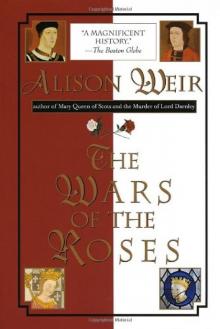 The Wars of the Roses
The Wars of the Roses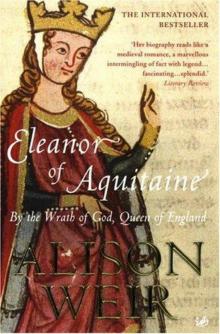 Eleanor of Aquitaine: By the Wrath of God, Queen of England
Eleanor of Aquitaine: By the Wrath of God, Queen of England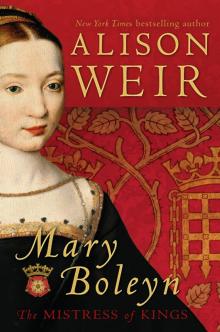 Mary Boleyn: The Great and Infamous Whore
Mary Boleyn: The Great and Infamous Whore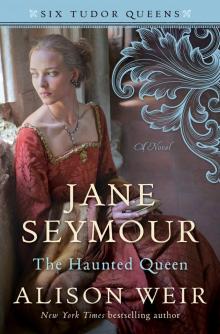 Jane Seymour: The Haunted Queen
Jane Seymour: The Haunted Queen Anna of Kleve, the Princess in the Portrait
Anna of Kleve, the Princess in the Portrait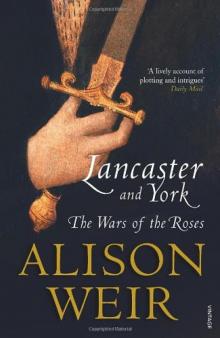 Lancaster and York: The Wars of the Roses
Lancaster and York: The Wars of the Roses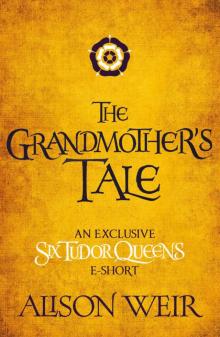 The Grandmother's Tale
The Grandmother's Tale The Princess of Scotland (Six Tudor Queens #5.5)
The Princess of Scotland (Six Tudor Queens #5.5)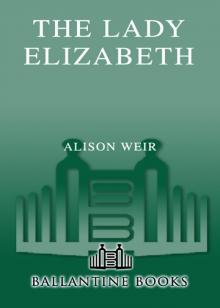 The Lady Elizabeth
The Lady Elizabeth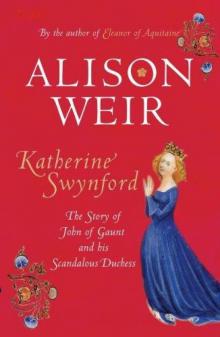 Katherine Swynford: The Story of John of Gaunt and His Scandalous Duchess
Katherine Swynford: The Story of John of Gaunt and His Scandalous Duchess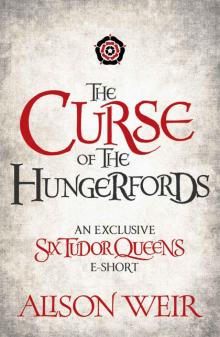 The Curse of the Hungerfords
The Curse of the Hungerfords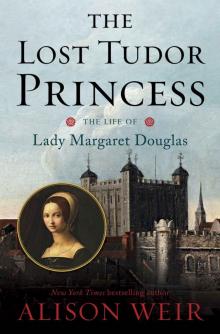 The Lost Tudor Princess: The Life of Lady Margaret Douglas
The Lost Tudor Princess: The Life of Lady Margaret Douglas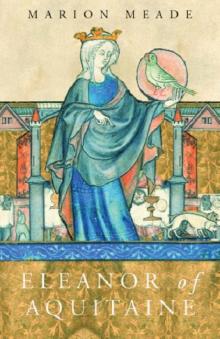 Eleanor of Aquitaine
Eleanor of Aquitaine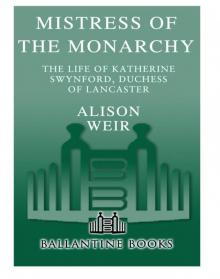 Mistress of the Monarchy
Mistress of the Monarchy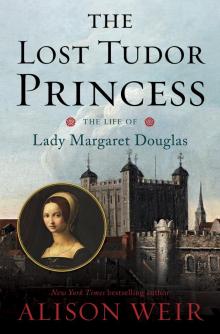 The Lost Tudor Princess
The Lost Tudor Princess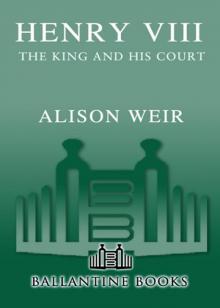 Henry VIII
Henry VIII Anne Boleyn, a King's Obsession
Anne Boleyn, a King's Obsession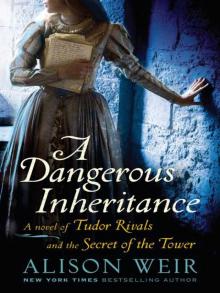 A Dangerous Inheritance: A Novel of Tudor Rivals and the Secret of the Tower
A Dangerous Inheritance: A Novel of Tudor Rivals and the Secret of the Tower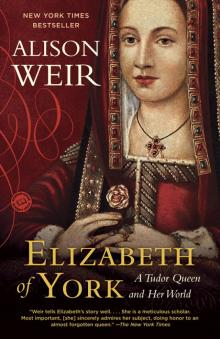 Elizabeth of York
Elizabeth of York Katherine of Aragon, the True Queen
Katherine of Aragon, the True Queen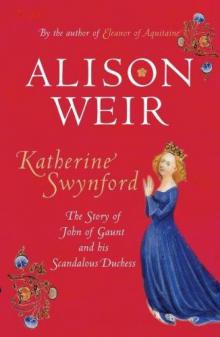 Katherine Swynford
Katherine Swynford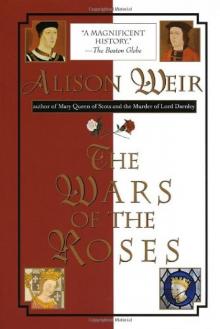 Wars of the Roses
Wars of the Roses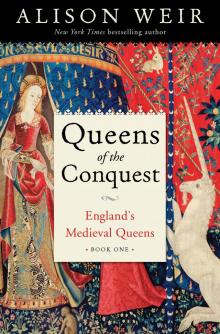 Queens of the Conquest
Queens of the Conquest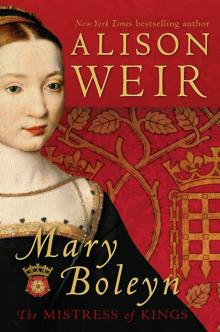 Mary Boleyn
Mary Boleyn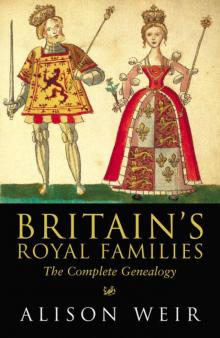 Britain's Royal Families
Britain's Royal Families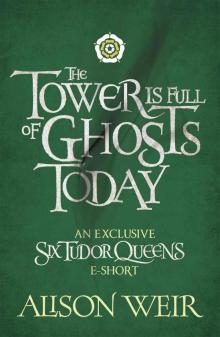 The Tower Is Full of Ghosts Today
The Tower Is Full of Ghosts Today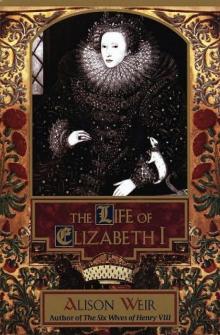 Life of Elizabeth I
Life of Elizabeth I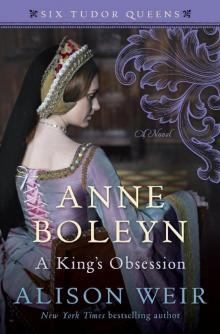 Anne Boleyn A King's Obssession
Anne Boleyn A King's Obssession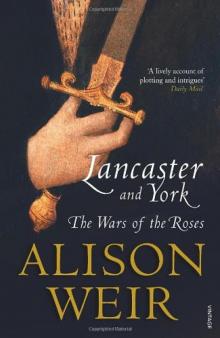 Lancaster and York
Lancaster and York Jane Seymour, the Haunted Queen
Jane Seymour, the Haunted Queen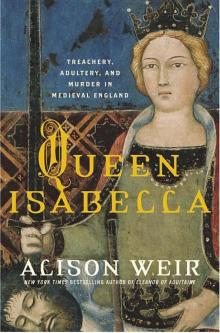 Queen Isabella
Queen Isabella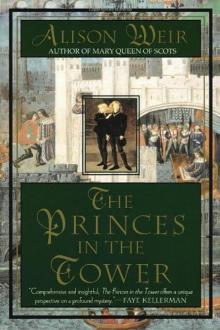 The princes in the tower
The princes in the tower